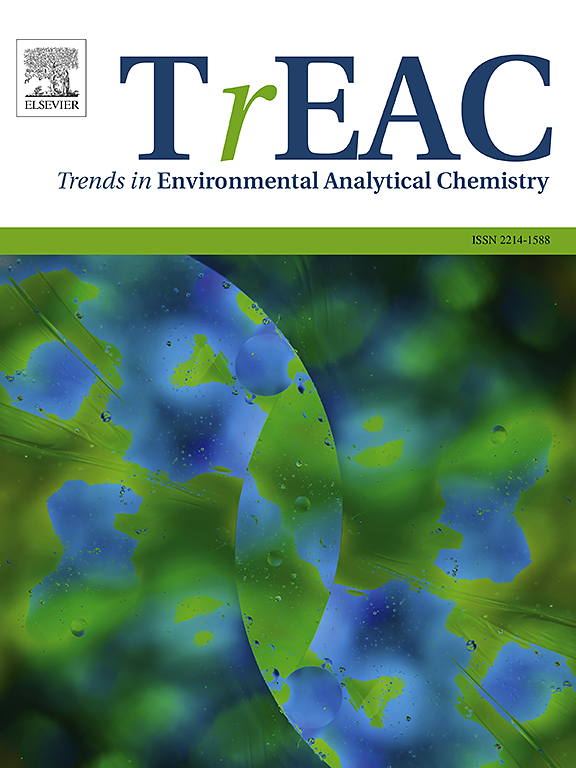Trace element determination using mass spectrometry coupled detection methods
IF 13.4
2区 化学
Q1 CHEMISTRY, ANALYTICAL
引用次数: 0
Abstract
About half a century ago, trace elements in the environment were restricted at upper parts per billion levels due to limited information on their toxicological effects on humans and other organisms in the environment. In this present day, stricter restrictions are being enforced by several regulatory authorities to curb the continuous release of trace elements into the environment through anthropogenic activities that have resulted from the demand to meet the global population increase. The severity of health disorders related to trace elemental exposure from different sources and doses seem to overshadow their relevance for several biological functions. Thus, toxicological studies that elucidate the harmful effects of chemicals and help regulators to set limits of restriction require very sensitive analytical instruments that offer selectivity and specificity for accurate and precise determinations. Mass spectrometry is a unique technique that suits the purpose of identifying, confirming and quantifying elements that emanate from various chemical species. Inductively coupled plasma mass spectrometry is a superior analytical technique used for the simultaneous determination of trace elements in various samples. This superior technique is further augmented by solid phase and liquid phase microextraction methods, which help separate trace elements from complex matrices into clean, readable and enriched forms for the instrument.
质谱耦合检测法测定微量元素
大约半个世纪以前,由于关于微量元素对人类和环境中其他生物的毒理学影响的信息有限,环境中的微量元素被限制在十亿分之一以上的水平。目前,一些监管机构正在实施更严格的限制,以遏制由于满足全球人口增长的需求而导致的人为活动不断向环境中释放微量元素。与不同来源和剂量的微量元素接触有关的健康失调的严重程度似乎掩盖了它们与若干生物学功能的相关性。因此,阐明化学品的有害影响并帮助监管机构设定限制范围的毒理学研究需要非常敏感的分析仪器,以提供准确和精确的测定的选择性和特异性。质谱法是一种独特的技术,适用于识别、确认和定量来自各种化学物质的元素。电感耦合等离子体质谱法是一种同时测定各种样品中微量元素的优良分析技术。固相和液相微萃取方法进一步增强了这种优越的技术,有助于将复杂基质中的微量元素分离成干净、可读和丰富的形式,用于仪器。
本文章由计算机程序翻译,如有差异,请以英文原文为准。
求助全文
约1分钟内获得全文
求助全文
来源期刊

Trends in Environmental Analytical Chemistry
Chemistry-Analytical Chemistry
CiteScore
21.20
自引率
2.70%
发文量
34
审稿时长
44 days
期刊介绍:
Trends in Environmental Analytical Chemistry is an authoritative journal that focuses on the dynamic field of environmental analytical chemistry. It aims to deliver concise yet insightful overviews of the latest advancements in this field. By acquiring high-quality chemical data and effectively interpreting it, we can deepen our understanding of the environment. TrEAC is committed to keeping up with the fast-paced nature of environmental analytical chemistry by providing timely coverage of innovative analytical methods used in studying environmentally relevant substances and addressing related issues.
 求助内容:
求助内容: 应助结果提醒方式:
应助结果提醒方式:


